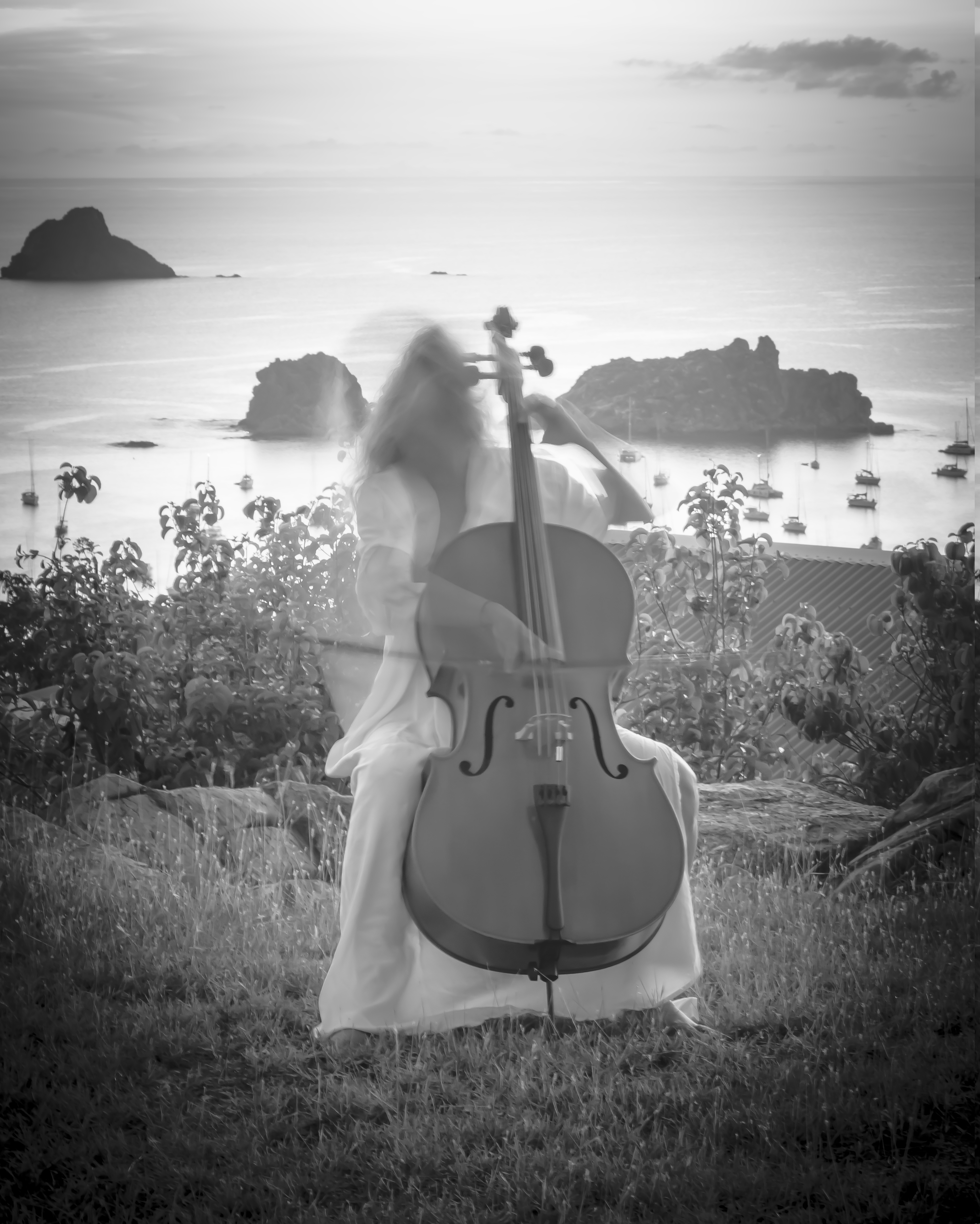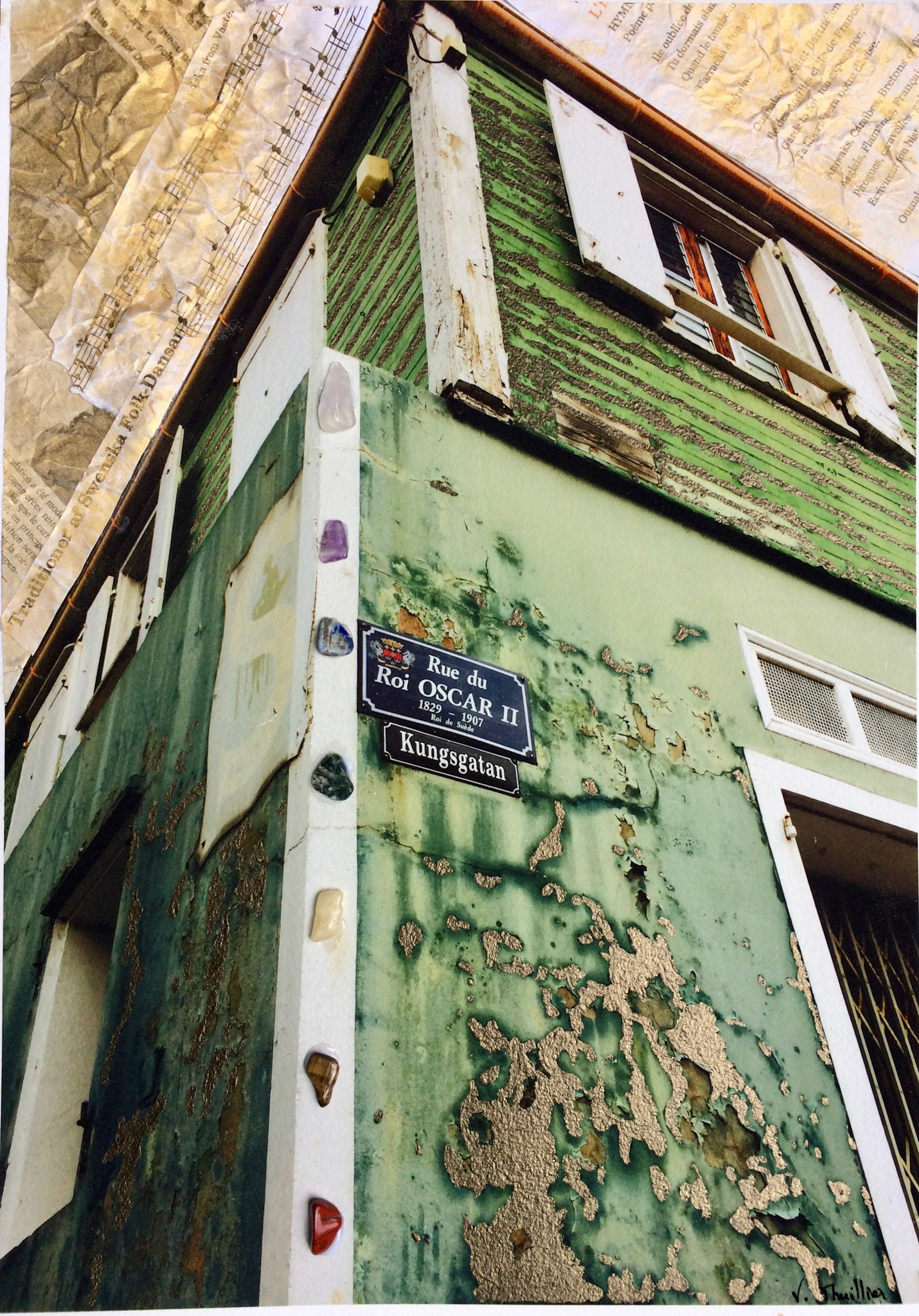
Precious
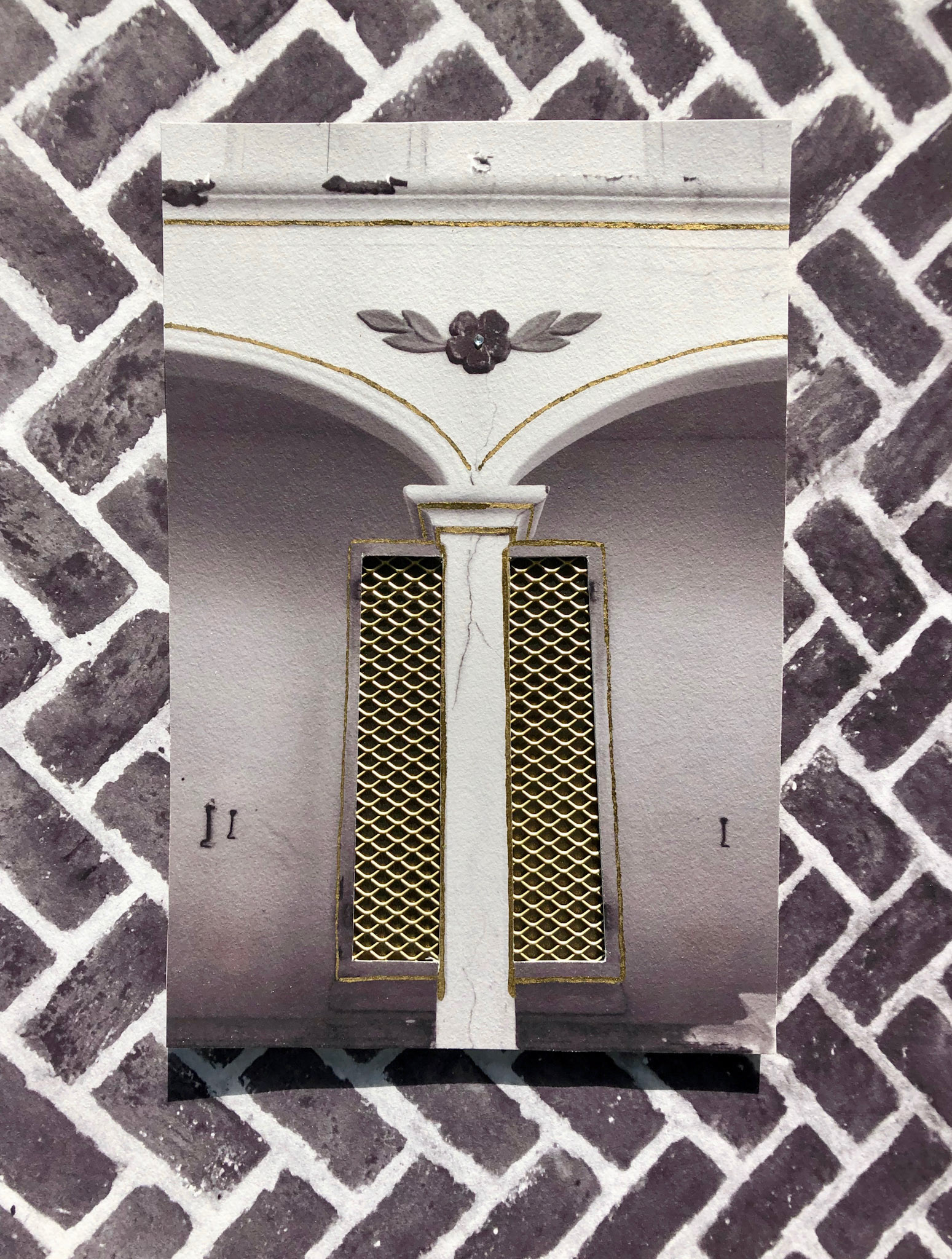
Gustavia's lines
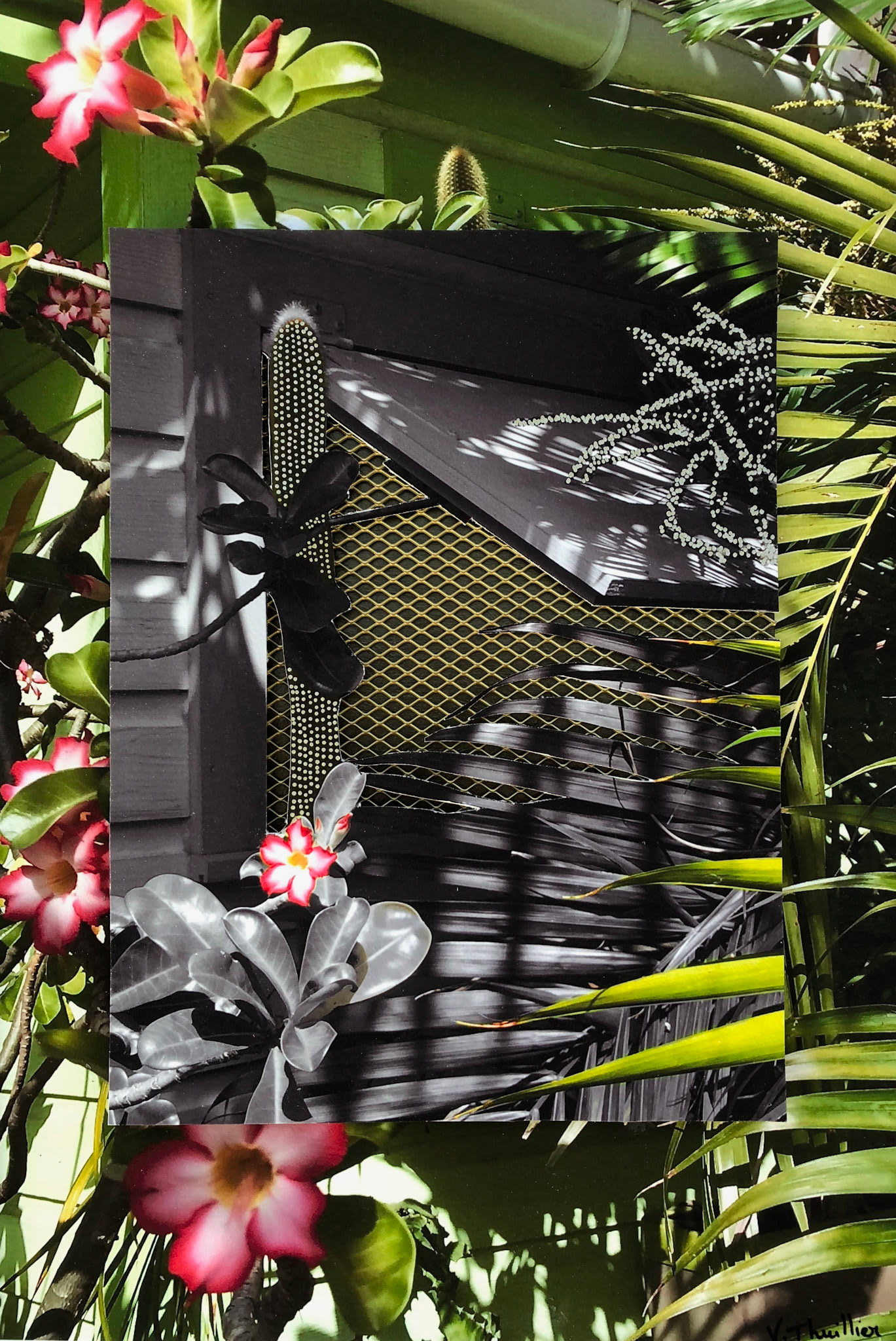
Haven of greenery
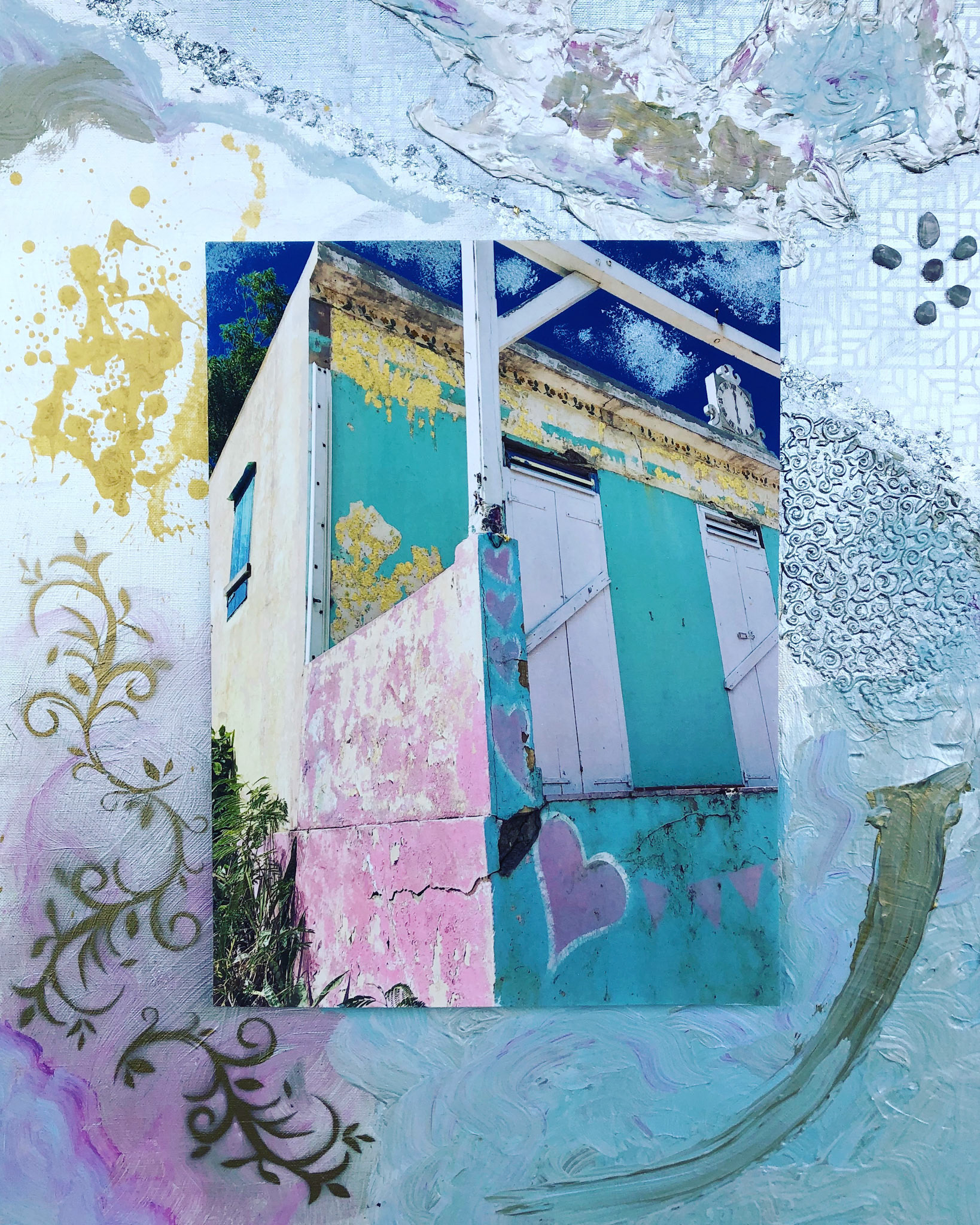
Loulou's potery
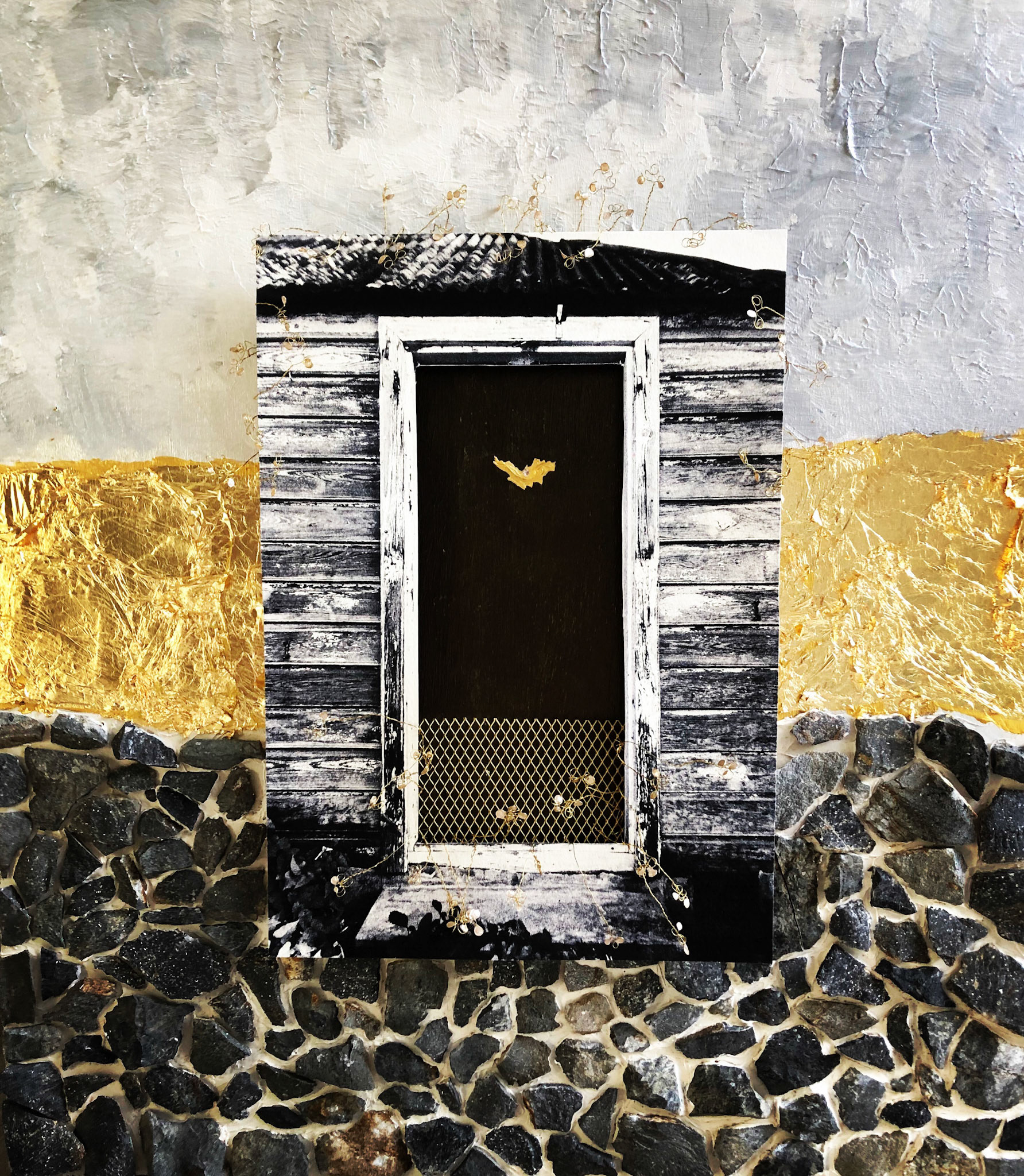
Earth
C’est l’image d’une mère, une compagne, dotée d’une histoire familiale, sociale ;
un édifice, un pilier, un monument pour ses proches…
Un écrin, une case, un havre de paix, de verdure, qui a vu naître ses enfants, qui les a portés et abrités, protégés…
Une grille dorée à la fenêtre, préservant l’intimité de ses habitants ; visant ainsi à protéger la femme, la famille, des regards indiscrets.
La maladie ou la vieillesse, tout comme un cyclone, emporte les bâtisses, les personnes.
Rien, ni personne, n’est immuable.
Sur bon nombre de belles habitations créoles, les stigmates du passage du cyclone Irma sont présents.
Paradoxalement, la courbe d’une arcade, une moulure de forme florale, de par leur esthétisme géométrique, invitent le spectateur à la reconnaissance d’un objet précieux en perdition.
La question se pose lorsqu’on a peur, ou lorsque l’on sent venir la fin : que va-t-il rester ? un corps dépouillé de vie ? l’image d’une façade abîmée ? des gravas ? des débris ? des brides de souvenirs ?
Dans ce désir d’immortalité, je souhaite que chaque édifice, si proche de la destruction soit-il, ayant porté l’histoire de plusieurs générations entre ses murs, marqué d’un panneau « rue du roi Oscar II » écrit en français, en suédois…soit l’objet d’un doux souvenir collectif; le souvenir de quelque chose, d'une personne précieuse.
***
The image of a mother, companion, carrier of family and social history; an edifice, a pillar, a monument for those around her...
A treasure trove, chest, lush peaceful haven, who has seen the birth of her children, carried, sheltered and protected them...
A golden screen over the window, preserving the privacy of its inhabitants; thereby aiming to protect the woman and the family from indiscreet glances.
Illness and old age, like a cyclone, bring buildings and people to the ground.
Nothing and no one are immune.
On a large number of beautiful creole dwellings,the scars of past cyclones are clear to see;
Paradoxically, the shape of an archway’s curve or a floral-shaped moulding invite the viewer to recognise a precious object in decay.
The question therefore arises when we are afraid, or sense the end nearing: what will remain? A body drained of life? The image of a ravaged facade? Engravings? Debris? Flashes of memories?
In this desire for immortality, I long for every building, no matter how close to destruction it may be, which has witnessed the unfolding history of several generations between its walls, marked with the sign “rue du roi Oscar II” written in French, in Swedish... to become part of a collective memory, a memory of something or someone precious.
